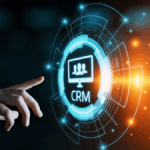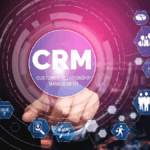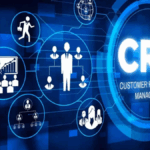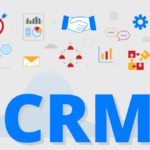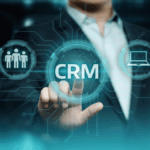In a digital-first economy, success isn’t just about acquiring leads — it’s about converting them. That’s where Customer Relationship Management (CRM) systems come into play. Beyond managing contacts, modern CRMs are powerhouses of automation, insights, and strategic alignment. When used correctly, they can significantly boost your sales, improve conversion rates, and enhance your customer experience.
This guide explores proven CRM strategies that work, helping you convert leads faster, reduce churn, and maximize your sales potential.
Why CRM Is Critical for Sales Success
More Than Just Contact Management
While storing customer information is a core function, CRMs now handle a wide array of sales activities — from tracking interactions and sending automated emails to providing insights into buyer behavior and sales forecasting.
Centralized Data for Smart Selling
With all lead and customer data in one place, sales reps get a complete view of the buyer’s journey, enabling better follow-ups and more personalized pitches.
Real-Time Insights
CRMs help you identify what’s working and what’s not. From deal stages to campaign ROI, you can optimize your sales strategy in real-time.
Strategy 1: Use CRM to Streamline Your Sales Pipeline
Visual Sales Pipelines
CRMs allow you to build and visualize custom pipelines. You can see where each deal stands — prospecting, negotiation, closed — and spot bottlenecks instantly.
Automate Stage Progression
Use automation to move deals to the next stage when conditions are met — like when a proposal is sent or a client responds positively.
Set Up Alerts and Reminders
Stay on top of every opportunity with scheduled alerts for follow-ups, calls, or contract deadlines.
Pro Tip: Use color-coded stages and tags to differentiate hot, warm, and cold leads.
Strategy 2: Automate Follow-Ups and Communications
Follow-Up Automation
CRM tools let you schedule emails, calls, or reminders based on customer behavior. This helps you maintain consistency without manual tracking.
Email Templates and Sequences
Save time with pre-designed, customizable templates. Set automated email sequences for lead nurturing, onboarding, or re-engagement.
Behavior-Based Triggers
Send automatic messages when a lead opens an email, clicks a link, or downloads a document. These timely follow-ups increase engagement and response rates.
Pro Tip: A/B test your subject lines and content to see what gets the best results.
Strategy 3: Prioritize High-Quality Leads With Scoring
What is Lead Scoring?
Lead scoring assigns points based on demographics, behavior, and engagement. For example, someone who downloads an eBook and visits your pricing page scores higher than someone who only visits the homepage.
How CRM Helps
Modern CRMs offer built-in lead scoring tools that automatically rank leads, helping your team focus on those most likely to convert.
Customize Your Lead Scoring Criteria
- Demographic info (job title, company size)
- Email open/click behavior
- Website visits
- Content downloads
- Social media engagement
Pro Tip: Regularly update your scoring model to align with sales trends and feedback.
Strategy 4: Align Sales and Marketing Through CRM
Shared Dashboards and Analytics
A CRM enables both sales and marketing teams to view shared data, campaign performance, and customer journeys. This eliminates data silos.
Marketing-to-Sales Handoff
Once marketing captures a lead, the CRM assigns it to the right sales rep automatically — ensuring no lead falls through the cracks.
Unified Communication Logs
Sales and marketing can access the same communication history, ensuring consistent messaging.
Pro Tip: Use CRM notes and tags to leave detailed records that other departments can easily interpret.
Strategy 5: Use CRM Analytics to Improve Sales Performance
Sales Forecasting
CRMs analyze historical data and current pipeline trends to predict future sales, helping you plan more accurately.
Performance Dashboards
See which reps are closing the most deals, how long it takes to move leads through the pipeline, and where drop-offs occur.
Campaign ROI Tracking
Identify which marketing channels and campaigns lead to actual sales, so you can double down on what works.
Pro Tip: Set up custom dashboards for each sales rep or team to monitor KPIs in real-time.
Strategy 6: Personalize the Customer Journey
CRM-Based Personalization
Use data stored in your CRM — such as purchase history, preferences, or previous conversations — to tailor your pitches and offers.
Segmentation
Segment customers by region, industry, behavior, or lifecycle stage and customize communication for each group.
Sales Scripts and Recommendations
Based on the CRM data, you can recommend specific products or services during a sales call.
Pro Tip: Combine CRM data with email marketing tools to send hyper-targeted campaigns.
Strategy 7: Manage Customer Retention and Upsells
Set Up Post-Sale Automation
CRM tools can automatically schedule post-sale emails, support outreach, or feedback requests.
Identify Upsell Opportunities
Your CRM helps spot patterns — for example, customers who bought Product A often purchase Product B within 60 days.
Customer Loyalty Programs
Track customer milestones and reward loyal clients with exclusive offers.
Pro Tip: Use satisfaction scores (like NPS or CSAT) stored in your CRM to trigger upsell or win-back campaigns.
Common CRM Mistakes That Hurt Sales
Poor Data Hygiene
Duplicate entries, outdated contacts, and incomplete fields hinder productivity. Clean your CRM regularly.
Not Using CRM Consistently
If reps don’t log calls or update statuses, your reports will be inaccurate and opportunities may be lost.
Overcomplicating the System
Too many custom fields or confusing workflows can reduce adoption. Keep it simple and relevant to your team.
Failing to Train the Team
Make sure all users understand the platform and the importance of CRM discipline.
How to Choose the Right CRM for Sales Growth
Look For:
- Ease of use: Adoption is critical
- Pipeline visualization: Helps manage deals at every stage
- Automation tools: Saves time
- Mobile access: For reps on the move
- Customizable reports: For performance tracking
- Integrations: With email, calendars, and sales tools
Recommended Platforms
- HubSpot: Great for beginners
- Salesforce: Highly customizable and powerful
- Zoho CRM: Budget-friendly and scalable
- Pipedrive: Visual pipeline management
- Freshsales: Excellent automation and AI insights
Real-World Success Example
Company: Mid-sized SaaS Startup
Challenge: Leads slipping through cracks, inconsistent follow-ups, and poor forecasting
CRM Implemented: Pipedrive
Results in 6 Months:
- Sales cycle reduced by 28%
- Lead response time improved by 45%
- Revenue increased by 19%
- Better coordination between marketing and sales
Conclusion
CRM is no longer just a digital Rolodex. It’s a powerful sales-enablement tool that can automate processes, personalize communication, prioritize leads, and forecast future growth. But success doesn’t come from the software alone — it comes from how you strategically use it.
If you’re looking to boost your sales, focus on building a streamlined pipeline, automating follow-ups, analyzing performance, and aligning your team. The right CRM strategies — backed by the right tools and consistent execution — can help you turn prospects into long-term customers, again and again.
FAQs
1. How does CRM improve sales productivity?
CRM automates routine tasks, tracks communication, and prioritizes high-value leads, allowing reps to focus on closing deals instead of data entry.
2. Can a CRM help with customer retention?
Yes. CRMs can schedule follow-ups, trigger loyalty campaigns, and alert teams about at-risk customers based on engagement trends.
3. Is CRM only for large sales teams?
No. Even solo entrepreneurs and small businesses can benefit from CRM tools for lead management, automation, and better organization.
4. What’s the best CRM for small businesses?
HubSpot, Zoho CRM, and Freshsales are ideal for SMBs due to their affordability, ease of use, and feature sets.
5. How long does it take to see results from a CRM?
With proper setup and training, most businesses start seeing results — like improved lead response and shorter sales cycles — within 2 to 3 months.

